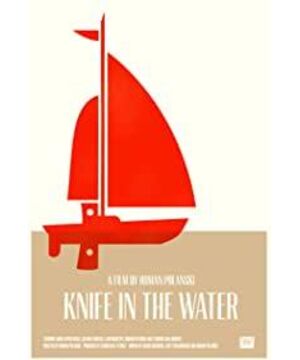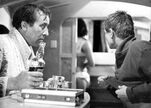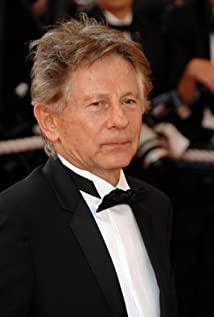There are only three actors in the black and white film. After reading some profile photos, I felt that there were only 6,7 people in the crew. At that time, filmmaking was really an idealized profession, and just a few people with the same ideas could hit the road. Most of the scenes are on a sailing boat with limited space, but the composition of each shot is very beautiful. Polanski was still a faithful believer in long shots with long depth of field at that time, and he spared no effort to practice.
The characters are a middle-class couple and a young man hitchhiking halfway. Between these seemingly stable couples, the young man seemed to be suddenly inserted with a knife, cutting away the original numbness. There is a passage about the title of the film: Knives are very useful in the woods and can open the way, but they are useless in the water. The husband insisted on inviting young people to go on their sailing boat and let the knife go to the water. He was familiar with sailing, but young people didn’t understand. The game of control and being controlled started on the boat, a power struggle between mature men and young men. , That's it. The existence of a wife as lust or spoils is not dispensable. She also has tremendous psychological pressure on her husband and young people, which directly changes the development of the story. Speaking of which, the first profound social understanding of every young male director is the power of women, how much they have neglected the influence of women ~ ~
boating, frolicking, slendering, rainstorm, stranding, games , Falling into the water ~ ~ The rapid evolution of the relationship between the three people is as unpredictable as the dull summer weather, a short movie, to play with the strangeness between familiar people, the intimacy between strangers, The sun is shining and gloomy, and people are close and alienated.
Alienation is the most important theme of all European films in the 1960s. The crisis of feelings and trust permeates the work of every director. At the end of the movie, jazz, as a representative speech of that era, resounded through the entire scene. A car stopped at the intersection, not knowing where to go...
View more about Knife in the Water reviews







